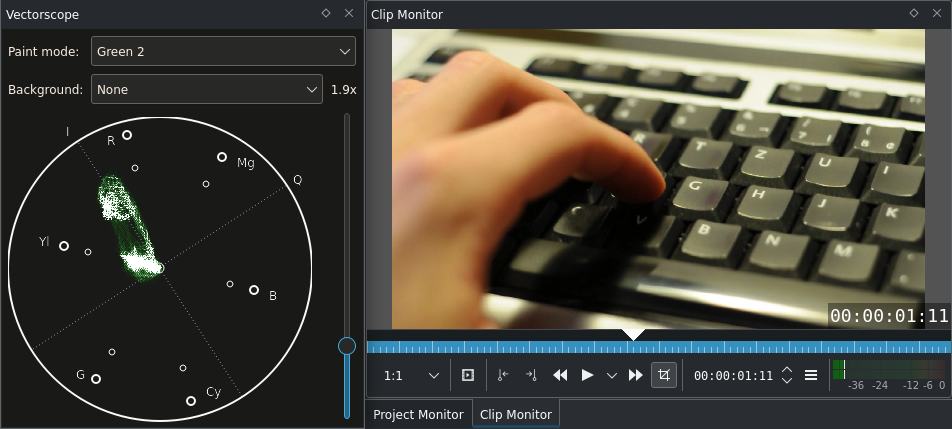Vectorscope I and Q Lines¶
The Vectorscope has an option to draw I/Q lines. So you may be wondering what are they good for?

I and Q lines in the Vectorscope¶
Where I/Q lines Come From¶
You may remember from the Vectorscope chapter that the Vectorscope uses a color space different than RGB. In the image above it is YUV, in the image below it is YPbPr. They both share the property that the Y component represents Luma only (i.e. how bright a pixel is), and the other two components represent Chroma (colour) by expressing deviations from neutral color on the red-green and yellow-blue axis. (These are complementary colours each, so mixing them in equal parts results in neutral again - which is why they can be used for the deviation.)
YUV is the standard color space for analog PAL television. NTSC, the american analog TV standard, uses a color space I did not mention yet: YIQ. The special thing about this color space is that the I component was chosen such that skin tones (also known as flesh tones) lie on the I line (orange-blue), and it was given more than four times as much bandwidth as the Q component (which represents the green-purple line; the human eye is also less sensitive for changes on this line).

Vectorscope showing skin tones along the I line¶
Purpose of the I and the Q line¶
Displaying the Q and especially the I line is to help with skin tones. There is a rule of thumb in post production saying that all skin tones should approximately lie on the I line. If it is not, you might want to color-correct your clip.
The simple reason for this is that our eyes are trained on skin tones, and if skin tones in your video do not lie in the I line they are very likely to look unnatural. There are very good picture examples in the Save our Skins article mentioned above.
Notes
- Sources
skin1.avi(720p, 5.1 MB)The original text was submitted by Simon A. Eugster (Granjow) on Fri, 11/26/2010 - 18:05 to the now defunct kdenlive.org blog. For this documentation it has been lifted from web.archive.org, updated and adapted to match the overall style.